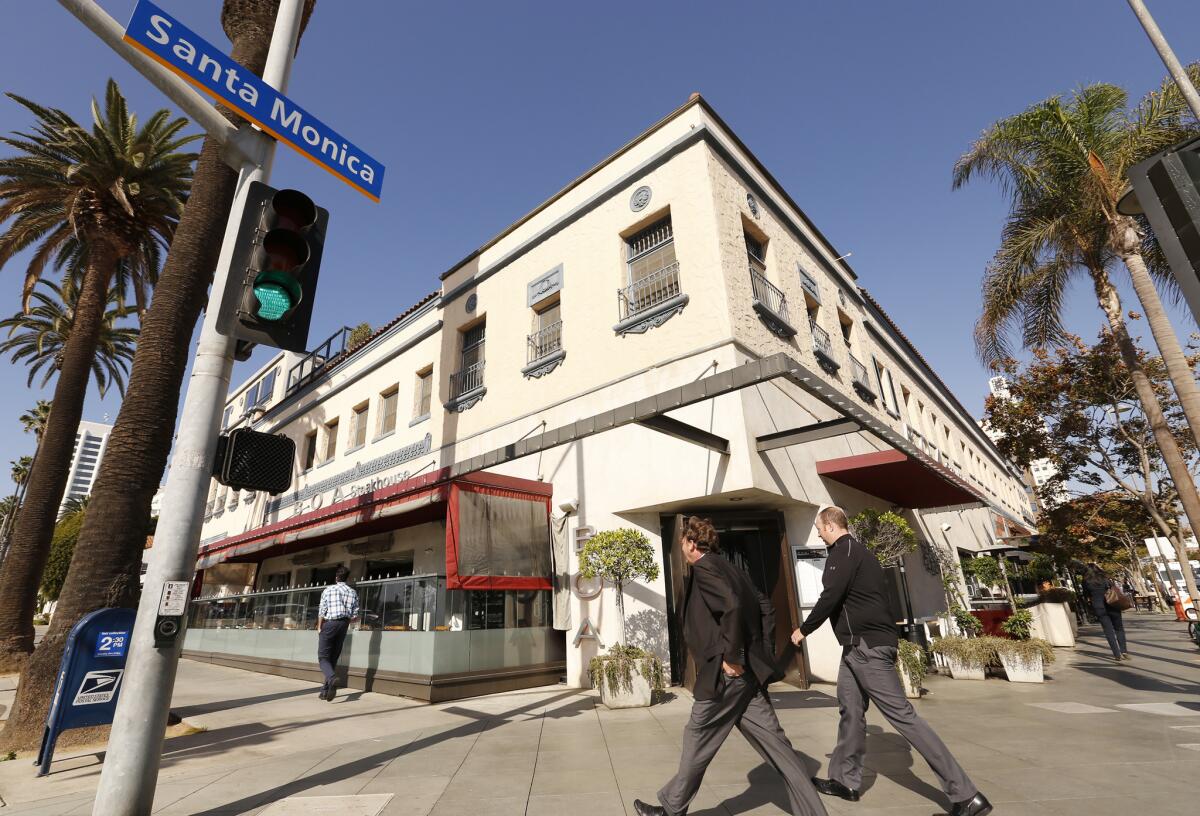Westside voters reject Santa Monica development measure as well as record-high tower in Beverly Hills

Voters in Santa Monica soundly defeated a strict anti-development measure on Tuesday, marking the end of the latest chapter in a contentious battle over how best to manage urban growth in the booming beachside city.
About 56.19% of voters rejected Measure LV, which had the potential to levy some of the most stringent growth limits in the state.
The initiative would have required elections for most development projects taller than 32 feet — a low bar covering many new apartment and condo developments, as well as office and retail projects.
The debate over the measure offered a preview of a much larger controversy brewing in Los Angeles, where voters in March will consider growth limits.
Santa Monica’s push for slow-growth rules came as the city saw a boom in multi-use projects, with developers seeking to take advantage of the new Expo Line and the city’s bustling downtown area.
Edward J. Casey, an attorney who represents residential, retail and commercial developers, said taking each new development in Santa Monica to the ballot box would have mired an already complicated process.
“The entitlement and environmental review process on any project takes a long time,” Casey said. “To add to that the whole voter approval process makes it a lengthier and more costly project.”
Backers of the measure said that they fear the influx of luxury developments could eventually price out Santa Monica’s renters, who make up 70% of the city’s 93,000 residents. They argued that the planning process at City Hall is rigged to favor deep-pocketed developers who promise a meager number of affordable housing units in order to build expensive mega-developments.
Tricia Crane, a member of the group Residocracy, which led the campaign for LV, said much of her concern surrounds the impact of development on the small city.
“There’s a disturbing lack of transparency in our government and a tremendous amount of power held by developers,” she told the Los Angeles Times last week.
Critics of the ballot measure worried that it would grind development to a halt, hurting the local economy. They argued that some new housing is necessary and could reduce prices.
“I’m grateful voters affirmed Santa Monica’s commitment to an inclusive and diverse community, rejecting a measure that would have limited our ability to meet Santa Monica’s housing needs,” said Santa Monica City Councilman Kevin McKeown.
McKeown said he heard LV supporters’ concerns about traffic and overdevelopment “loud and clear” and has proposed less extreme ways of assuring voter approval for projects that exceed the zoning code.
In Beverly Hills, a contentious ballot initiative to erect the city’s tallest building ever, a 26-story condominium tower adjacent to the Beverly Hilton hotel, failed 56% to 44%.
Some provisional ballots remain to be counted, but voters’ forceful rejection of Measure HH probably will result in the Hilton-backed project proceeding with previously approved plans for two condo towers of eight and 18 stories each, spokeswoman Marie Garvey said Wednesday.
“We stated from the beginning that we wanted to let the residents decide what would be built in the future,” Garvey said. “Right now it looks like they want the 2008 plan built, and if that result holds, that is exactly what we will do.”
Los Angeles Times staff writer Kim Christensen contributed to this report.
For more California news follow me on Twitter: @sarahparvini
More to Read
Sign up for Essential California
The most important California stories and recommendations in your inbox every morning.
You may occasionally receive promotional content from the Los Angeles Times.











